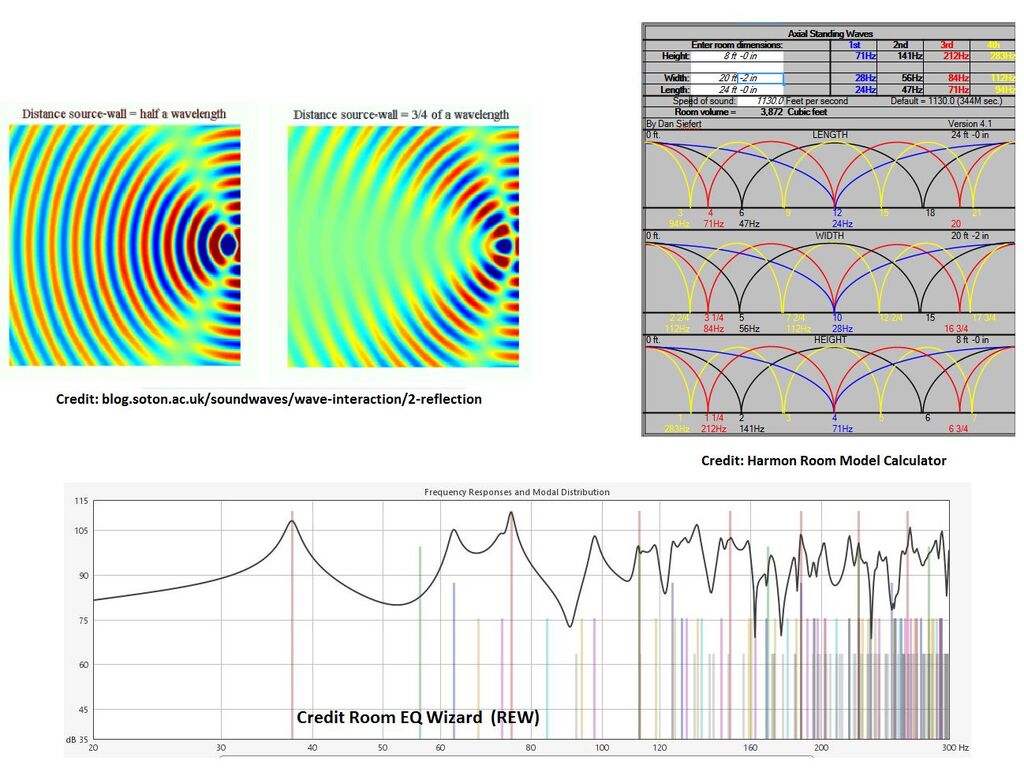

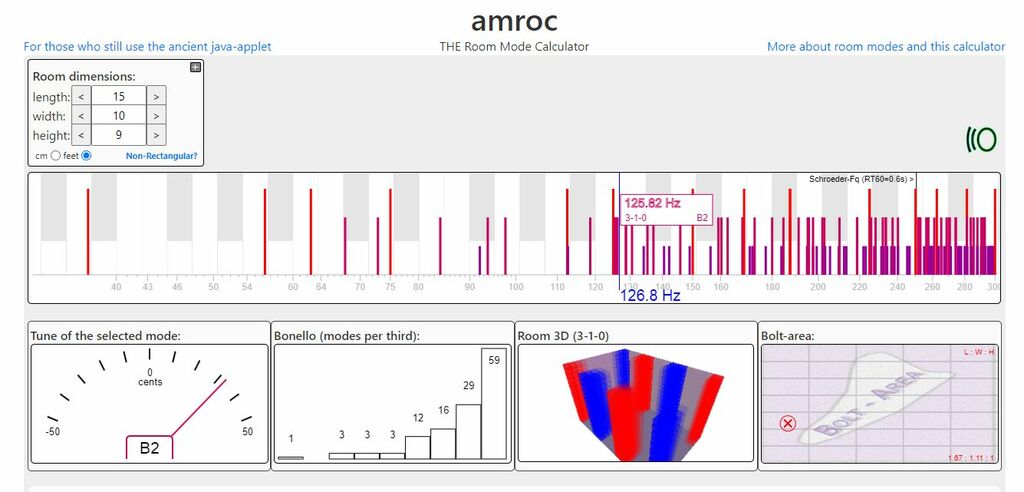
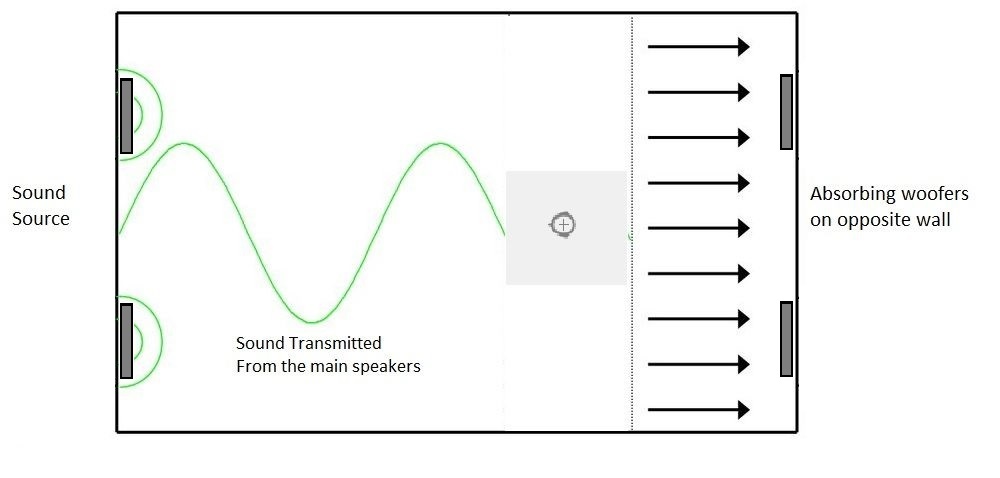
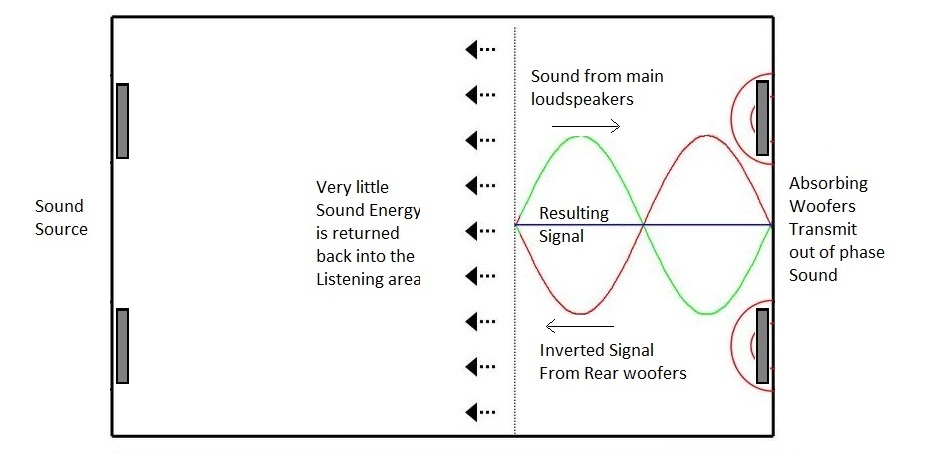
The worlds first flat woofer that does not take up space in a room, has no conventional box, mounts on or against a wall, is efficient, there is no need for bass traps, and it turns your listening room into a waveguide to solve bass room mode problems
The first time multiple subwoofers can be used in any room, the Thigpen Waveguide Woofer is an entirely new loudspeaker architecture, a new type of boxless planar monopole loudspeaker from Bruce Thigpen that improves efficiency, material use, weight, and size when compared to traditional loudspeakers. The home subwoofer less than 3 inches thick.
For the traditional home theater or home audio listening room, room modes are typically a big problem below about 200hz. Even though home audio woofers are very flat, used in a typical listening room, this is far from the case. Swings in frequency response at the listening position can be +/-15dB.
While you can subtract the peaks with DSP "room correction" software, these tools cannot fully correct the room mode dips in frequency response. There is a large amplifier power penalty for either a subtraction OR addition to correct these errors.
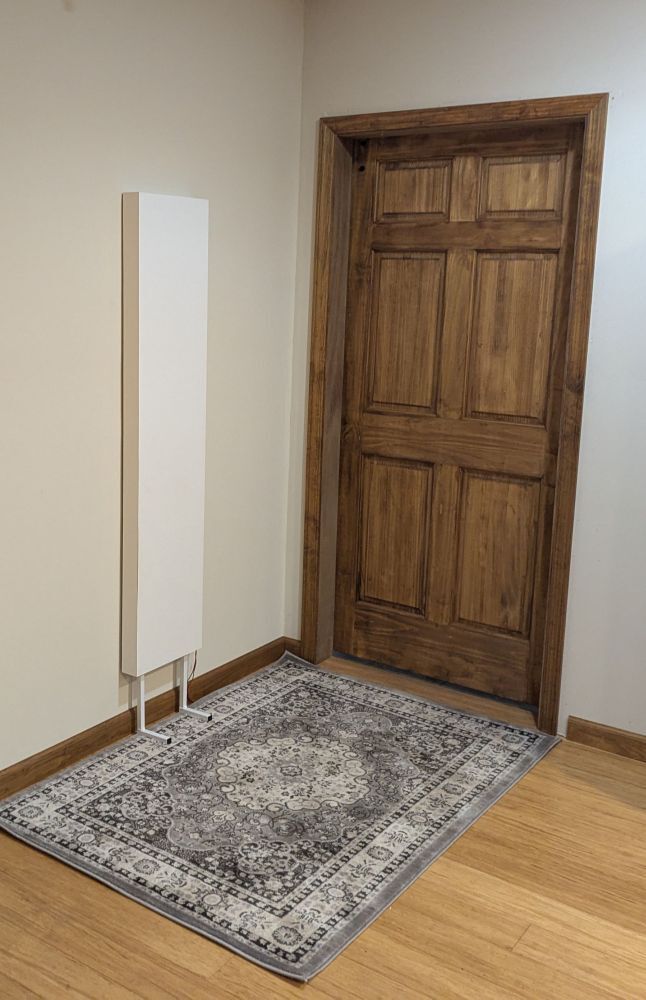
The waveguide woofer is a new type of
loudspeaker where box volume is traded for
diaphragm area. This is facilitated with both a
moving magnet and moving coil configuration.
Diaphragm area is achieved by using parallel
horizontally opposed planes (which become the
speakers diaphragm or cone) of a stiff, light
weight material. The motor, a voice coil and
magnet span between adjacent planes, the voice
coil is attached to a front plane and the magnet is
attached to a rear plane, the force of the voice coil
simultaneously opposes the two planes. Two U.S. Patents
have been granted.
Conventional home loudspeakers or subwoofers placed near side or rear walls create reflections, these long wavelength low frequency reflections, depending on frequency, sum with the source and cause numerous peaks and dips in the frequency response experienced by the listener. While peaks can be corrected with DSP, severe dips, cannot be corrected. The Thigpen woofer's large sound source and thin form factor allow you to have multiple woofers in any sized room and turn the room into waveguide.
Shown below, the woofers are positioned to create a low frequency waveguide (also known as a double bass array). Here the sound travels from left to right, low frequencies travel down the room and are absorbed at the opposite end. There is an amazing improvement in both dips and peaks in the rooms low frequency response and control over decay rate with this approach.
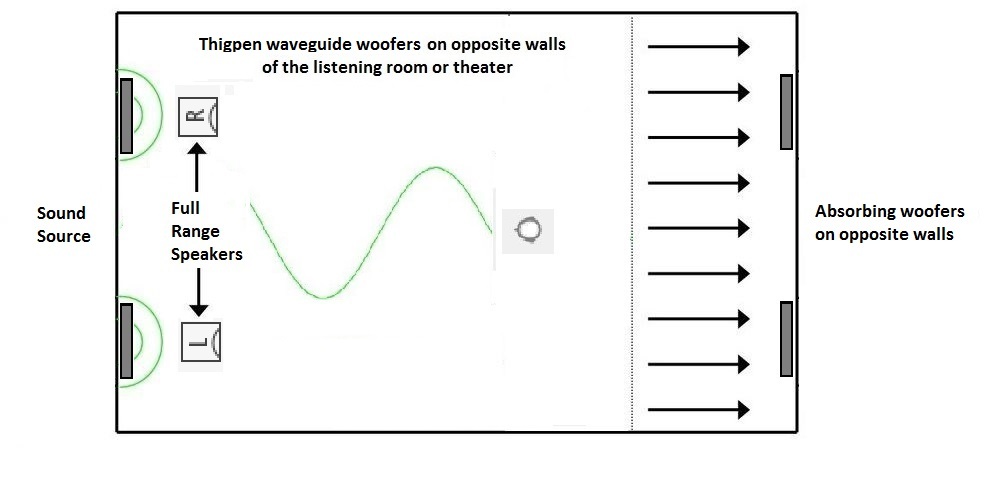
Below are tools used to predict the frequency response of a loudspeaker or woofer in a listening.
